Naomi Ogura Profile
Illustrator, manga artist and art student. Author of many books on childcare and parent-child relationships, including the “Hataraki Maman” series, which comically depicts the daily life of working mothers. She has also contributed manga for a glaucoma awareness booklet by Santen. Her latest book is “Hataraki Maman: The Unexpected Menopause Edition – Get Through the Hot Flashes!”
World Glaucoma Week
Glaucoma is a leading cause of blindness in many countries and regions, and it is estimated that approximately 76 million people worldwide suffer from the disease—a number that is expected to rise to 95 million people by 2030*1.
Every year, for one week in early March, events are held around the world to raise awareness of glaucoma as part of World Glaucoma Week (WGW). In 2025, WGW will be held from March 9 to 15.
Glaucoma is a disease that affects the optic nerve, which transmits information from the eye to the brain, and results in a narrowing of the field of vision (range of vision). If one eye loses its field of vision due to glaucoma, the other eye will compensate for the loss, so early-stage glaucoma has almost no subjective symptoms. For this reason, early detection and treatment are extremely important.
Illustrator and manga artist Naomi Ogura was diagnosed with glaucoma in her 40s and continues to treat the condition while studying at an art school as a working student. We spoke to Ogura, who maintains a positive outlook on life, about how she has come to terms with glaucoma.
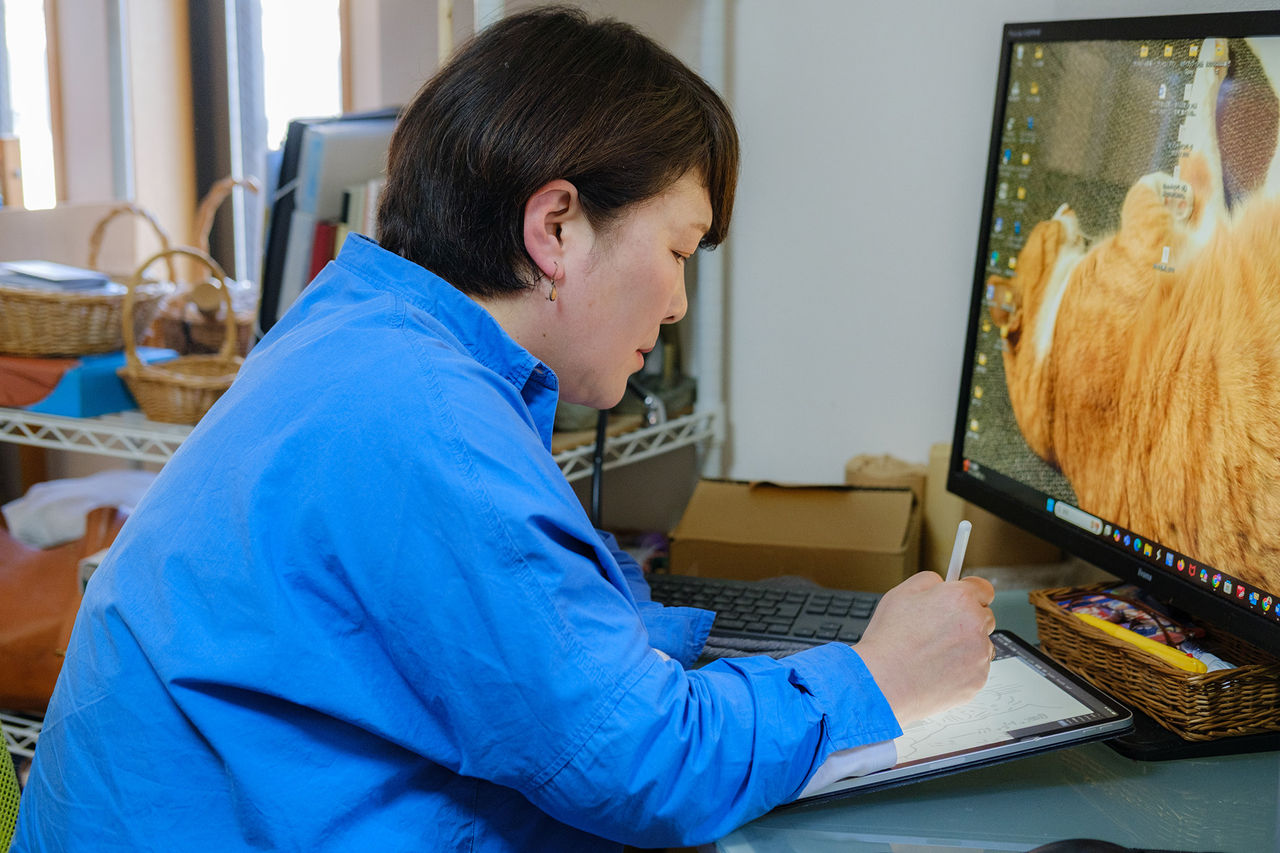
Unexpected glaucoma: only eye drops can stop symptom progression
―I understand that you were diagnosed with glaucoma after undergoing a regular medical exam in 2018.
I was lucky to have discovered it by chance. I have a long history as a full-time housewife and business owner, and because I have always been self-employed, I’ve never had a health check. My health insurance association offers a subsidized annual health check, so I thought, “I'll use it once in a while,” and applied for a full medical exam for the first time in about 10 years.
After the checkup, I was told to have a follow-up exam, so I went to a nearby ophthalmologist and was diagnosed with glaucoma. I knew that glaucoma could lead to blindness, but I had no subjective symptoms, so I was surprised and thought, “Why me?”
In addition to the fact that it is an incurable disease, and that treatment will continue for the rest of my life, I was shocked to learn that the treatment is eyedrops—usually when you think of treatment for a serious illness, you figure it’s going to be hospitalization and surgery, right? So, I was concerned, but the doctor told me, “Eye drops can be used to suppress symptom progression, so please don't worry,” and without giving me time to think about it, the treatment began that day.
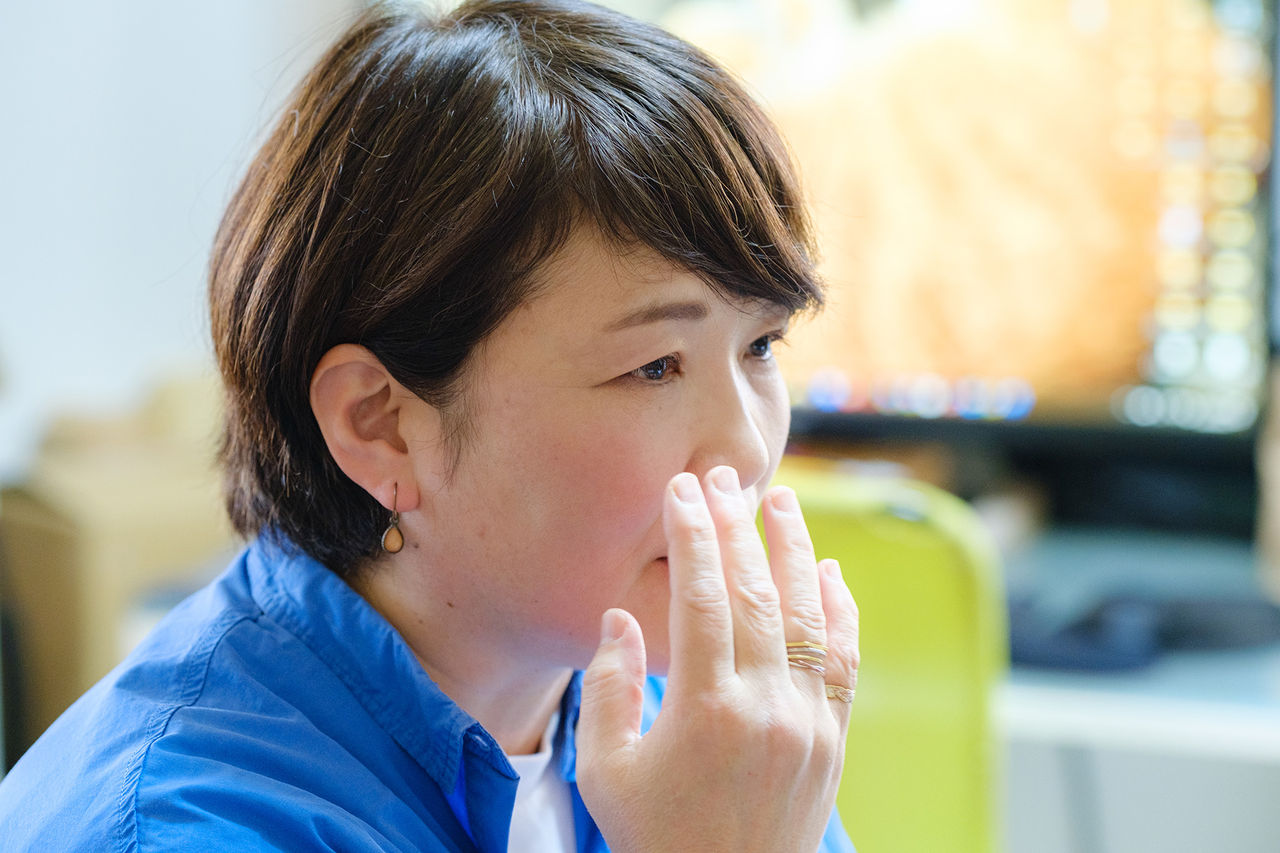
“Before my diagnosis, I assumed that glaucoma meant you suddenly lose your sight, like a shutter closing.”
―In many cases, progression of glaucoma can be managed through regular doctor visits and eye drops, and patients can go on with their lives. The problem is that many people don’t adhere to their treatment; in fact, research shows that “in Japan, about 40% of patients stop one year after starting treatment.”*2
I can understand why people stop. There aren’t any subjective symptoms, you can't really feel the effects of the treatment, and even if they tell you that treatment is needed to maintain your current condition, you are likely to put it off if you are busy.
I’m fortunate to have an eye clinic a short five-minute walk from my house, and I have a good relationship with my doctor, so I can go to the clinic during the day on weekdays when it’s not busy. I got into the habit of using my glaucoma eye drops in the morning before putting on my contact lenses. To maintain your motivation for treatment, it might be important to find something you enjoy—such as a favorite shop near the eye clinic, or to incorporate eye drops and high-quality skin care into your morning routine.
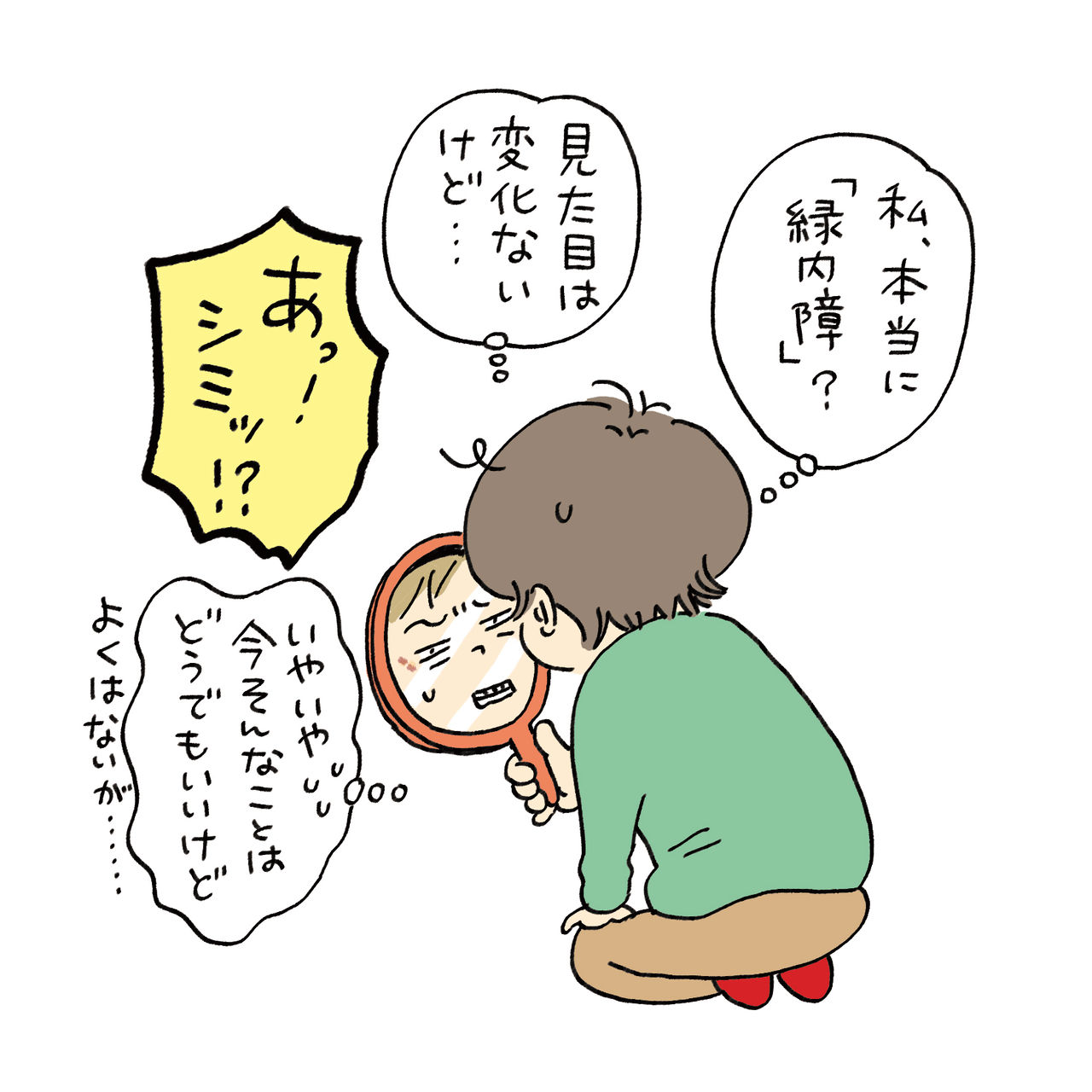
© Naomi Ogura
Had the diagnosis been delayed... the chill of fear that came later
―How did your family react when you told them the results of the diagnosis?
My husband was shocked. He was worried I might go blind, because his father-in-law had lost his sight to glaucoma. When I told him that the condition had been detected early and that progression could be halted with treatment, he seemed very relieved.
My father-in-law, who has glaucoma, gave me encouragement, saying that it was a good thing that it had been detected early. He told me about his painful experience of losing the sight in one eye when he was young and at the peak of his career. My husband had never heard about his father’s hardships. I gathered that my father-in-law hadn’t had anyone he could to talk to about it until now, and that his worries were deeper than people realized.
Today, I can see with both eyes, but if I lost sight in one eye and thought “now I might lose sight in both eyes”, then I would feel a tremendous amount of fear. It was only after I developed glaucoma that I could appreciate what my father-in-law was feeling.
―How did you get information about glaucoma?
When I was diagnosed, I didn’t know much about glaucoma, and what I did know I had gotten from the ophthalmologist. So, I started gathering information from the internet and other sources, and when I realized how serious the disease was, I was scared. It wasn’t until sometime after my diagnosis that I truly felt, “I'm so glad I was able to be diagnosed early.”
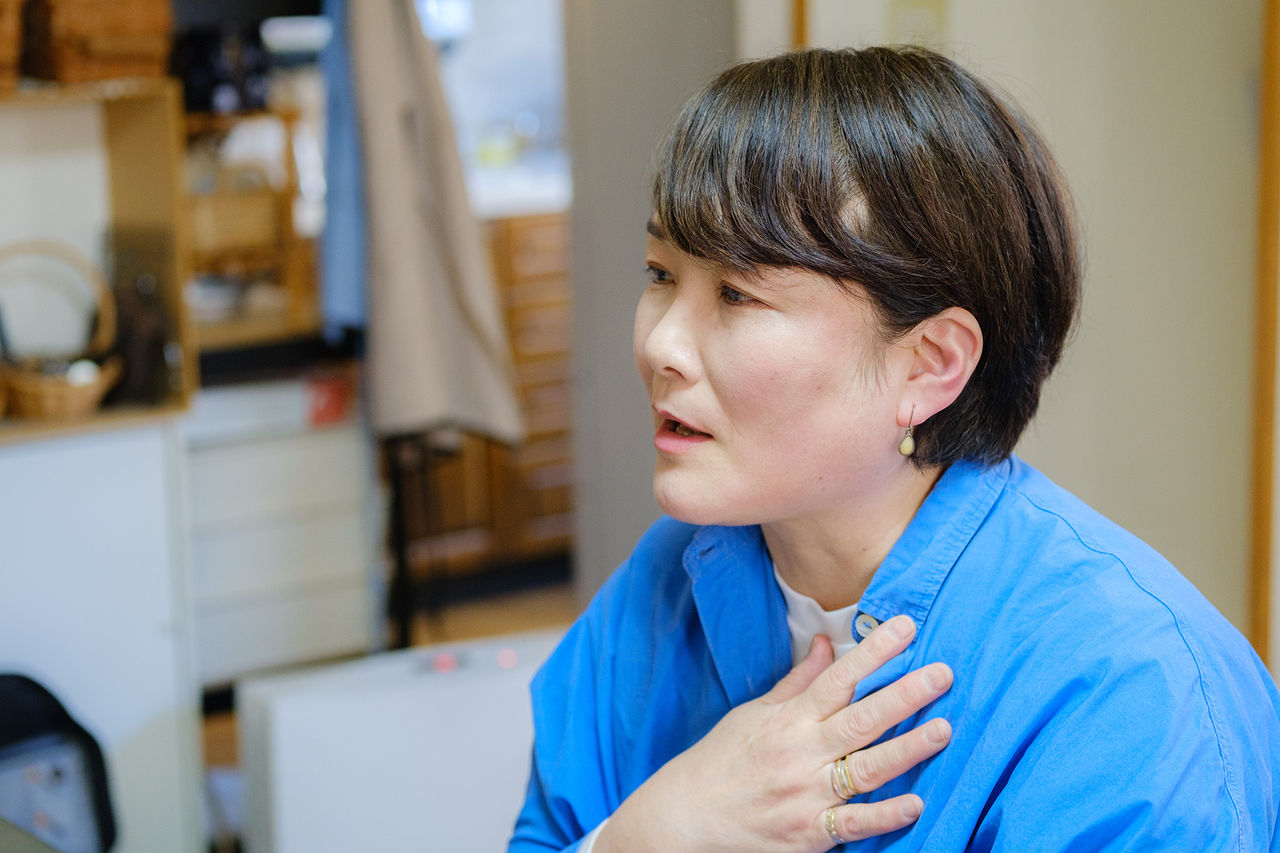
Glaucoma diagnosis led to art school
―You entered an art school in 2023, and in 2025 you’re going to do a year-long specialized course. Is there any connection between you being diagnosed with glaucoma and your decision to take the entrance exam?
I’d always wanted to “study art properly someday.” After being diagnosed with glaucoma, I realized that I didn't know what would happen to me in the future, so I decided to take the entrance exam. It would cost a lot of money, and I was worried that I wouldn't be able to work or do housework like I’d been doing up until then, but my family encouraged me to go ahead.
I studied hard for the entrance exam and was really happy when I passed. When I told other people that I was going to art school, they thought I was going to be teaching and were surprised when I told them I was going to be a student. Everything about student life is new and fresh, and missing even one day would be a shame!
―You are majoring in woodblock printing. Why?
Woodblock printing is interesting in itself, as is the carving of the wood, and the finish can change completely depending on how it is printed. I was attracted to it because the process and expression are completely different from the pictures I have been drawing up until now.
In art, your age, gender and previous career are irrelevant, and I sometimes get depressed when I see the work of my classmates who are better at it than me. Even when I think I've really done my best, my teacher rarely praises me (lol). For now, I'm just desperately trying to figure out how I can improve my work.
The other day, I took part in a group exhibition and displayed my woodblock prints in a gallery for the first time. It was a pleasant surprise to be invited to participate by classmates who were around the same age as my own children, and it was also a valuable experience to learn a lot about how to produce an exhibition from classmates who had experience doing that.
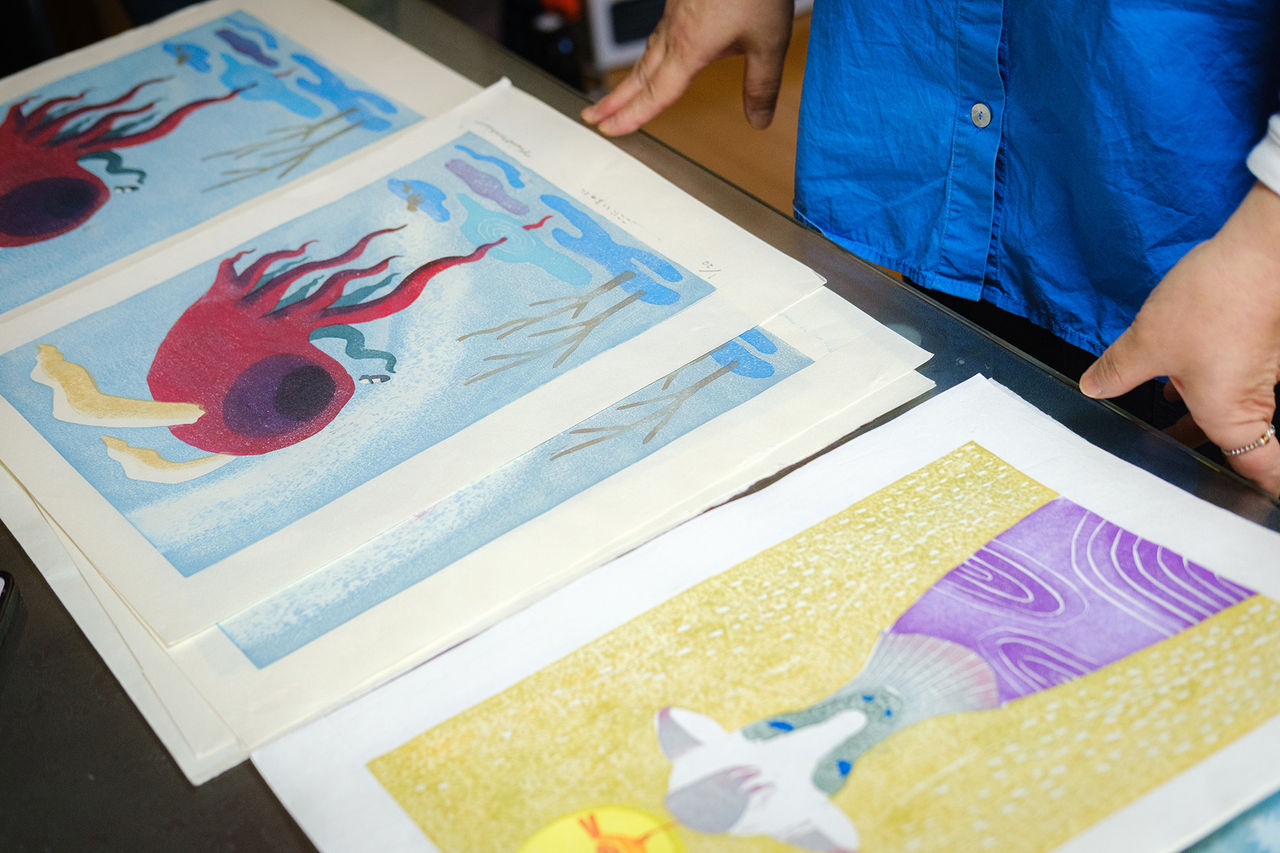
Printmaking work produced at art school
Early detection is key to turning the tide on glaucoma
―Do you have any challenges you want to take on or dreams you want to fulfill?
Following the major challenge of the art school entrance exam, I’ve set myself the goal of continuing to create woodblock prints and exhibiting my work. Studying art has also helped me reaffirm the appeal of manga. In both cases, as you get older, you find new things you want to draw, and I think it's a job worth spending a lifetime on. My greatest wish is to “live a long life” so that I can continue to create.
When I was raising my children, I overcame the difficulties I faced by turning them into comic book material with a touch of humor. I'd like to make a comic about glaucoma in the future, but after the initial shock of the diagnosis, it's just going to the hospital and putting in eye drops, rinse and repeat—there's not much drama to it, so it's not very easy to draw (lol).
However, the fact that I started treatment early is what makes it possible for me to laugh like this. That's why I want to actively promote the importance of check-ups.
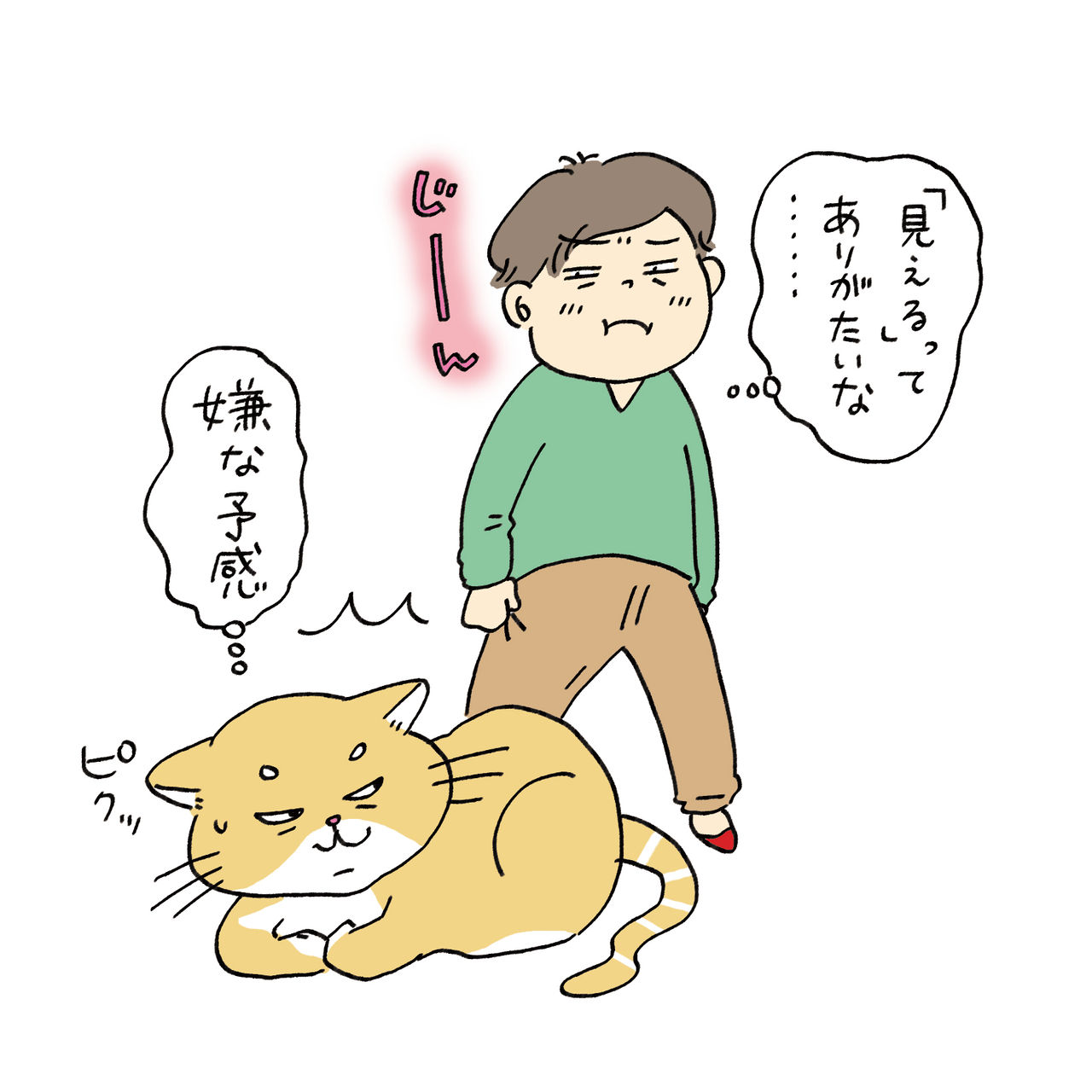
© Naomi Ogura
―Data shows that 90% of glaucoma cases remain undetected and untreated*3. If the detection had been delayed, would your situation today be any different?
Indeed. I might never have taken my art school entrance exam. Whether you're studying art, working, or just living your life, being able to “see” is a prerequisite. Having glaucoma made me appreciate the importance of eye health.
People who are raising children or who are in the prime of their careers have no time to spare and going for a checkup can be a chore. However, since your body is something you will use for the rest of your life, I’d recommend regular health checks for you and your family. I will continue to have an annual checkup.
I'm sure that anyone who has been treated for glaucoma has thought “Why me?” at least once. Glaucoma is a disease that anyone can get but being able to halt the progression of symptoms simply by using eye drops is a blessing. There are many of us in Japan and around the world—so let’s do it together!
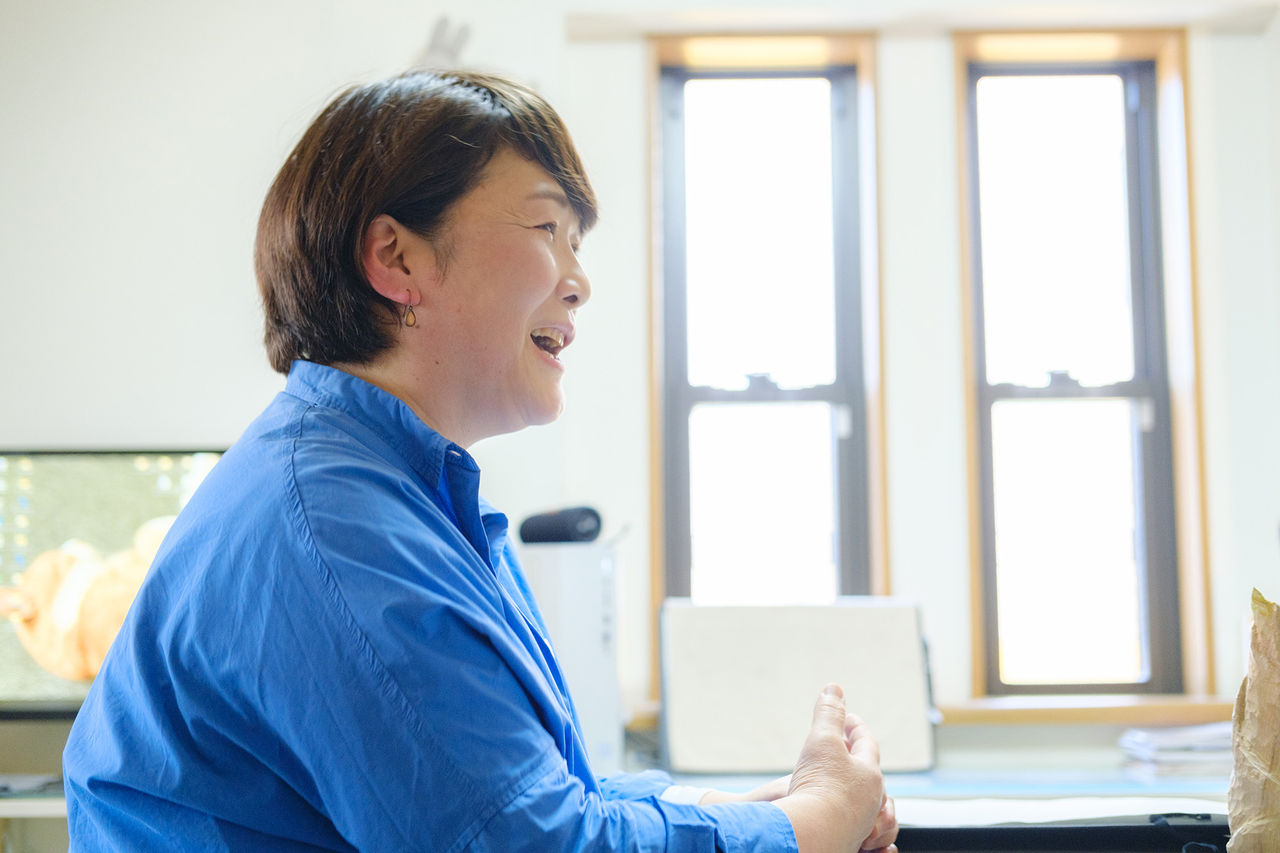
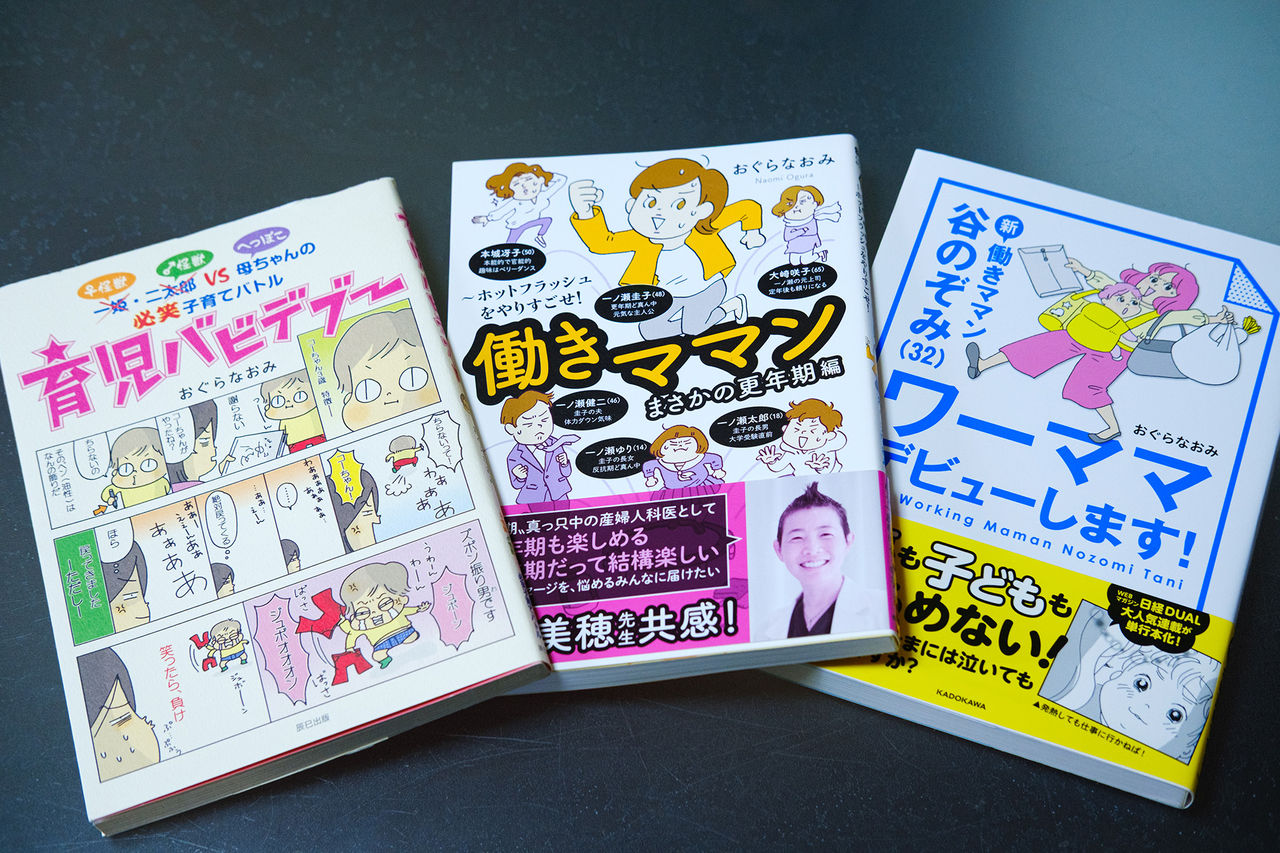
Ogura continues to draw manga
about subjects based on her experiences,
such as childcare, working mothers,
and menopause.
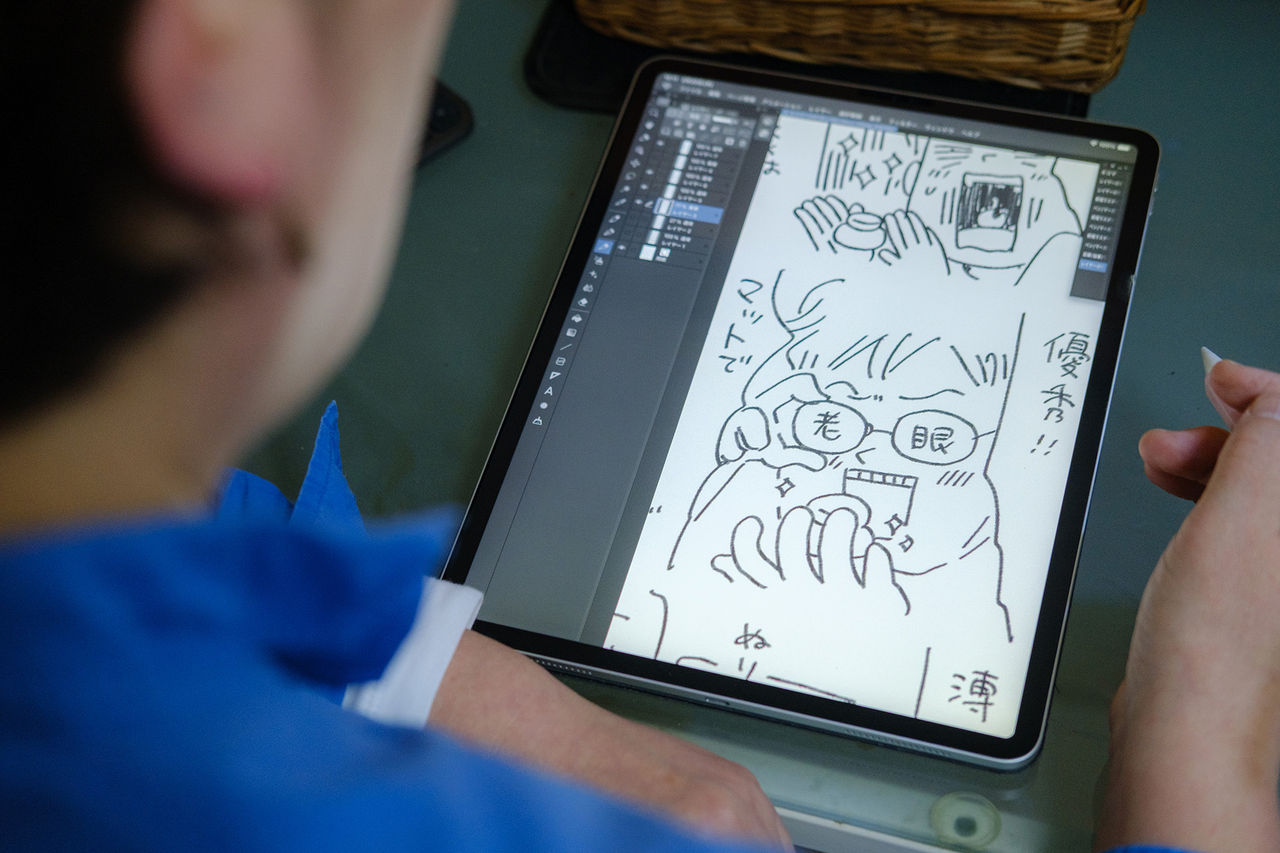
She draws her manga on a tablet;
the ability to zoom in on details is
kind to aging eyes.

Her workplace is a bright living room flooded
with natural light.
- World report on vision. Geneva: World Health Organization; 2019. License: CC BY-NC-SA 3.0 IGO
- Kenji Kashiwagi: Clinical Ophthalmology 69(11)270-273、2015(Kashiwagi K et al.: Jpn J Ophthalmol, 58: 68-74. 2014)
- Report on the “Japan Glaucoma Society Tajimi Glaucoma Epidemiology Survey (“Tajimi Study)”
Related pages
Please check the following pages for more information about glaucoma and the latest initiatives:



